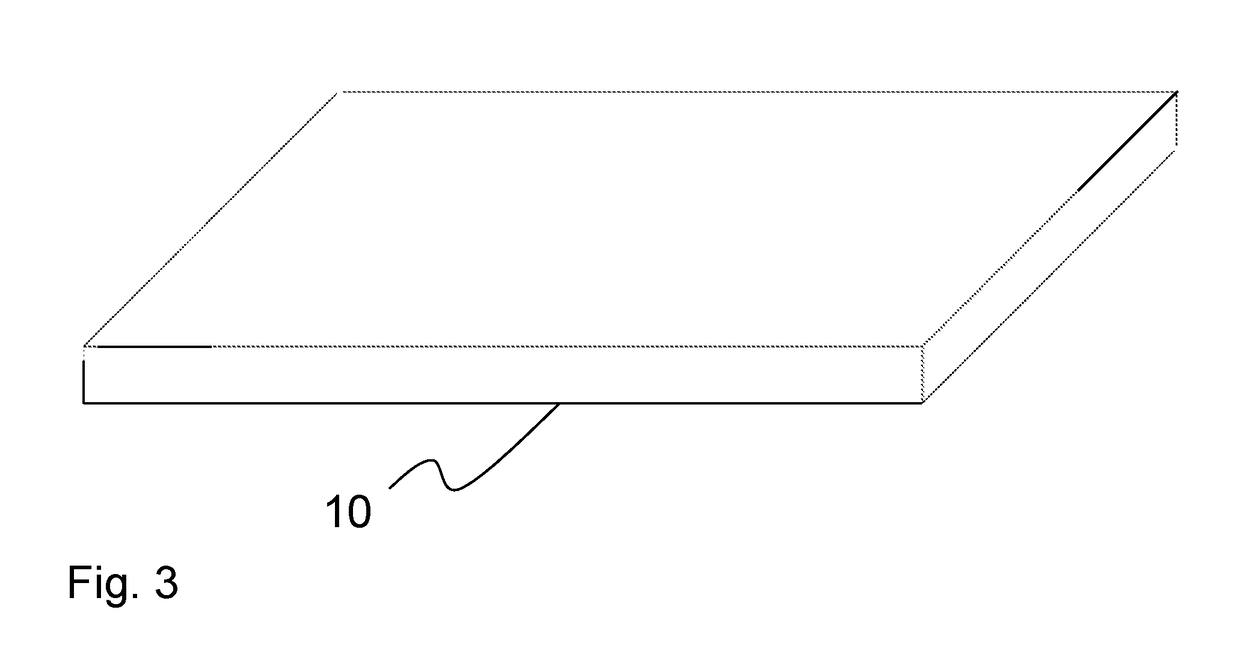Thin film battery having low fluid content and an increased service life
a thin film battery and fluid content technology, applied in the field of thin film batteries, can solve the problems of significant difficulties in service life, cycle stability, and reduced storage capacity of lithium-based batteries or lithium-based accumulators, and achieve the effect of easy use and increased service li
- Summary
- Abstract
- Description
- Claims
- Application Information
AI Technical Summary
Benefits of technology
Problems solved by technology
Method used
Image
Examples
Embodiment Construction
[0137]FIG. 1 schematically shows a thin film battery 1 according to the present invention. It comprises a substrate 2 which is made of an inorganic, silicon-containing, in particular silicate, substantially fluid-free material. On the substrate, a sequence of different layers is applied. By way of example and without being limited to the present example, first the two collector layers are applied on the substrate 2, cathode collector layer 3, and anode collector layer 4. Such collector layers usually have a thickness of a few micrometers and are made of a metal, for example of copper, platinum, aluminum, or titanium. Superimposed on collector layer 3 is cathode layer 5. If the thin film battery 1 is a lithium-based thin film battery, the cathode is made of a lithium-transition metal compound, preferably an oxide, for example of LiCoO2, LiMnO2, or else LiFePO4. Furthermore, the electrolyte 6 is applied on the substrate and is at least partially overlapping cathode layer 5. In the cas...
PUM
| Property | Measurement | Unit |
|---|---|---|
| frequency | aaaaa | aaaaa |
| temperature | aaaaa | aaaaa |
| temperature θMax | aaaaa | aaaaa |
Abstract
Description
Claims
Application Information
 Login to View More
Login to View More - R&D
- Intellectual Property
- Life Sciences
- Materials
- Tech Scout
- Unparalleled Data Quality
- Higher Quality Content
- 60% Fewer Hallucinations
Browse by: Latest US Patents, China's latest patents, Technical Efficacy Thesaurus, Application Domain, Technology Topic, Popular Technical Reports.
© 2025 PatSnap. All rights reserved.Legal|Privacy policy|Modern Slavery Act Transparency Statement|Sitemap|About US| Contact US: help@patsnap.com



